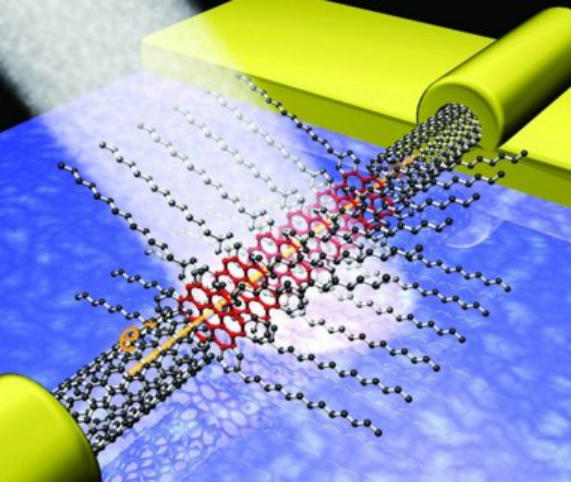Carbon Nanotubes in Next-Generation Solar Cells: Enhancing Efficiency and Stability
As global demand for renewable energy grows, solar cells remain at the forefront of sustainable energy solutions. Carbon nanotubes (CNTs), with their exceptional electrical, optical, and mechanical properties, are transforming the development of next-generation solar cells. From improving energy conversion efficiency to enhancing durability, CNTs offer innovative solutions for overcoming traditional challenges in solar cell technology.

This article delves into the application of CNTs in solar cells, highlighting their unique properties, practical implementations, market potential, and challenges.
Unique Properties of Carbon Nanotubes in Solar Cell Applications
- High Electrical Conductivity
- CNTs possess extraordinary electron transport properties, with conductivity reaching up to 10^6 S/m.
- This enables efficient charge collection and transfer in solar cells.
- Wide Bandgap Tunability
- CNTs can absorb a broad spectrum of sunlight, ranging from ultraviolet to infrared, maximizing light harvesting.
- Mechanical Strength
- CNTs provide structural stability, making solar cells resistant to mechanical stress and environmental degradation.
- Transparency
- Thin films of CNTs are transparent, making them suitable for use in transparent electrodes.
- Thermal Stability
- CNTs maintain performance under high temperatures, a critical factor for outdoor solar applications.
Key Roles of CNTs in Solar Cell Designs
1. Transparent Conductive Films
- Role: Replacing traditional indium tin oxide (ITO) as a transparent electrode.
- Advantage: CNT films offer superior flexibility, lower cost, and resistance to cracking compared to ITO.
2. Charge Transport Layers
- Role: CNTs act as efficient charge transport layers (CTLs) in perovskite and organic solar cells.
- Advantage: Their high carrier mobility accelerates charge extraction, reducing energy loss.
3. Light Harvesting Enhancement
- Role: Embedded CNTs enhance the light absorption capacity of active layers.
- Advantage: CNTs contribute to plasmonic effects, increasing photocurrent generation.
4. Mechanical Reinforcement
- Role: CNTs improve the mechanical durability of flexible and stretchable solar cells.
- Advantage: Devices can withstand bending and deformation without losing efficiency.
Applications of CNTs in Solar Cell Technologies
1. Organic Solar Cells (OSCs)
- CNTs are used as both transparent electrodes and charge transport layers.
- Example: Incorporating CNTs improves the efficiency of OSCs by enhancing exciton dissociation and charge mobility.
2. Perovskite Solar Cells (PSCs)
- CNTs replace traditional materials in hole-transport layers, leading to improved stability and efficiency.
- Example: CNT-based PSCs demonstrate efficiencies exceeding 20% with reduced hysteresis.
3. Dye-Sensitized Solar Cells (DSSCs)
- CNTs are employed as counter electrodes to replace expensive platinum.
- Example: CNT-based DSSCs achieve competitive efficiencies while lowering production costs.
4. Thin-Film Solar Cells
- CNT films act as light-trapping layers to improve photon absorption.
- Example: Thin-film cells with CNTs show enhanced energy conversion rates due to better light management.
5. Flexible and Wearable Solar Cells
- CNTs enable the production of lightweight, flexible cells for wearable electronics.
- Example: CNT-infused polymers create robust, stretchable solar panels for outdoor applications.
Real-World Case Studies
1. CNT Transparent Electrodes in Perovskite Solar Cells
- Researchers have developed CNT-based transparent electrodes with a sheet resistance of <10 Ω/sq and >90% transparency.
- Result: Devices demonstrate enhanced power conversion efficiency and mechanical flexibility.
2. CNT Counter Electrodes in DSSCs
- CNT counter electrodes achieve efficiencies close to platinum-based cells but at a fraction of the cost.
- Result: Commercial viability for large-scale DSSC production.
3. Hybrid CNT-Silicon Solar Cells
- Integrating CNTs with silicon wafers enhances light absorption and reduces recombination losses.
- Result: Efficiencies improved by up to 15% compared to conventional silicon cells.
Market Potential and Growth
The global solar cell market is projected to grow significantly, driven by advancements in materials and increasing adoption of renewable energy solutions. CNTs are positioned to play a critical role in this growth due to their unique properties and versatility.
Market Drivers
- Growing demand for lightweight and flexible solar technologies.
- Rising costs of traditional materials like ITO and platinum.
- Increasing focus on sustainability and low-carbon manufacturing processes.
Market Projections
- The CNT-based solar cell market is expected to grow at a CAGR of over 15% between 2023 and 2030.
Challenges and Limitations
- Scalability of CNT Production
- Producing high-quality CNTs at a commercial scale remains cost-intensive.
- Dispersion and Uniformity
- Achieving stable dispersion and uniform films is challenging, affecting device performance.
- Material Integration
- Compatibility of CNTs with existing solar cell manufacturing processes requires optimization.
- Cost vs. Efficiency
- Balancing the cost of CNT integration with performance improvements is critical for widespread adoption.
Future Directions
- Advanced CNT Synthesis
- Developing cost-effective methods for producing high-purity CNTs with tailored properties.
- Hybrid Materials
- Combining CNTs with graphene or metal nanowires to further enhance efficiency and durability.
- Automation in Fabrication
- Integrating CNT-based materials into roll-to-roll manufacturing for large-scale solar cell production.
- Emerging Applications
- Exploring CNTs for tandem solar cells and next-generation quantum dot solar cells.
Conclusion
Carbon nanotubes are revolutionizing the solar energy sector by addressing critical challenges in efficiency, durability, and material cost. Their integration into various solar cell technologies, including OSCs, PSCs, and DSSCs, has demonstrated significant performance improvements and expanded the scope of solar applications.
As research and development continue to overcome current limitations, CNTs are poised to become a cornerstone material in the pursuit of high-performance, next-generation solar cells. The synergy between CNT technology and solar innovation holds immense potential for driving global energy sustainability.

